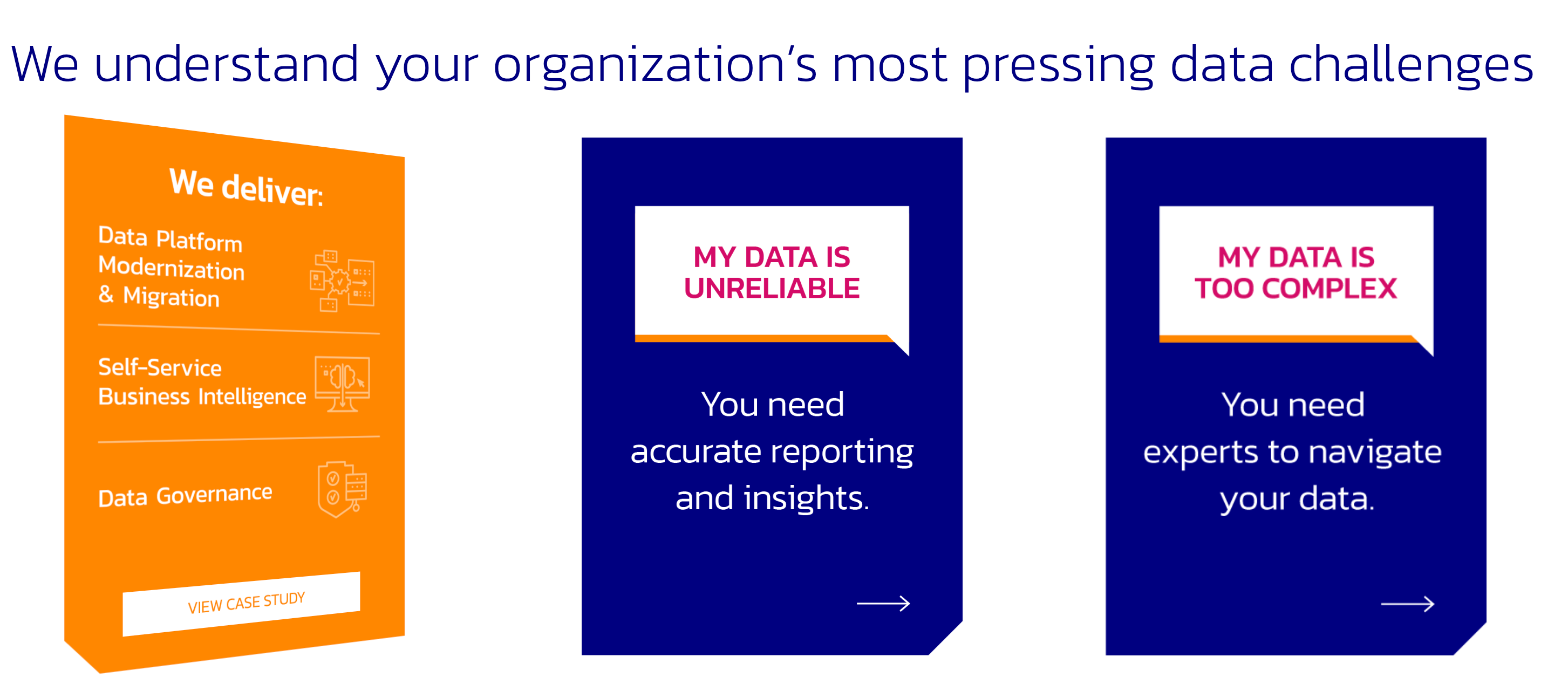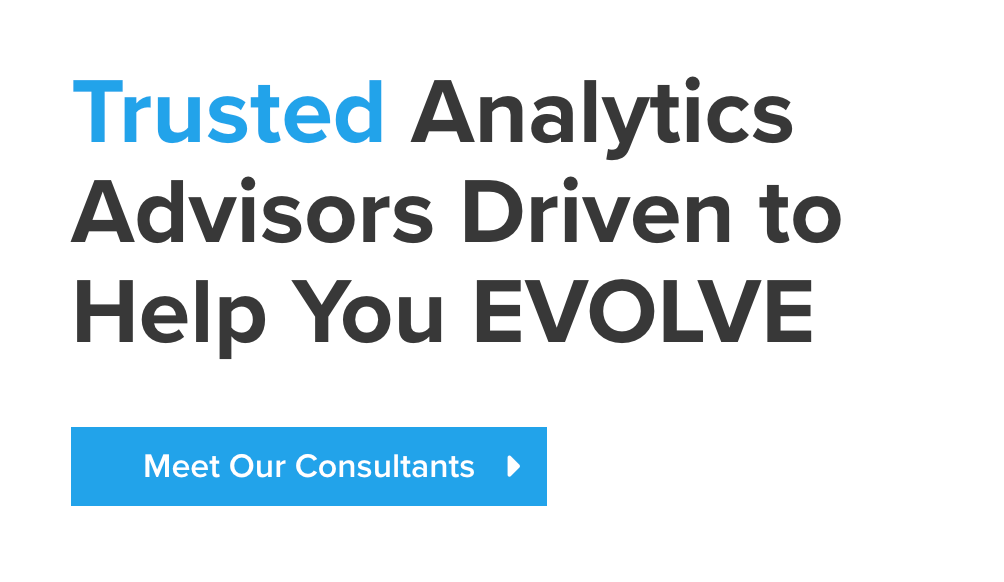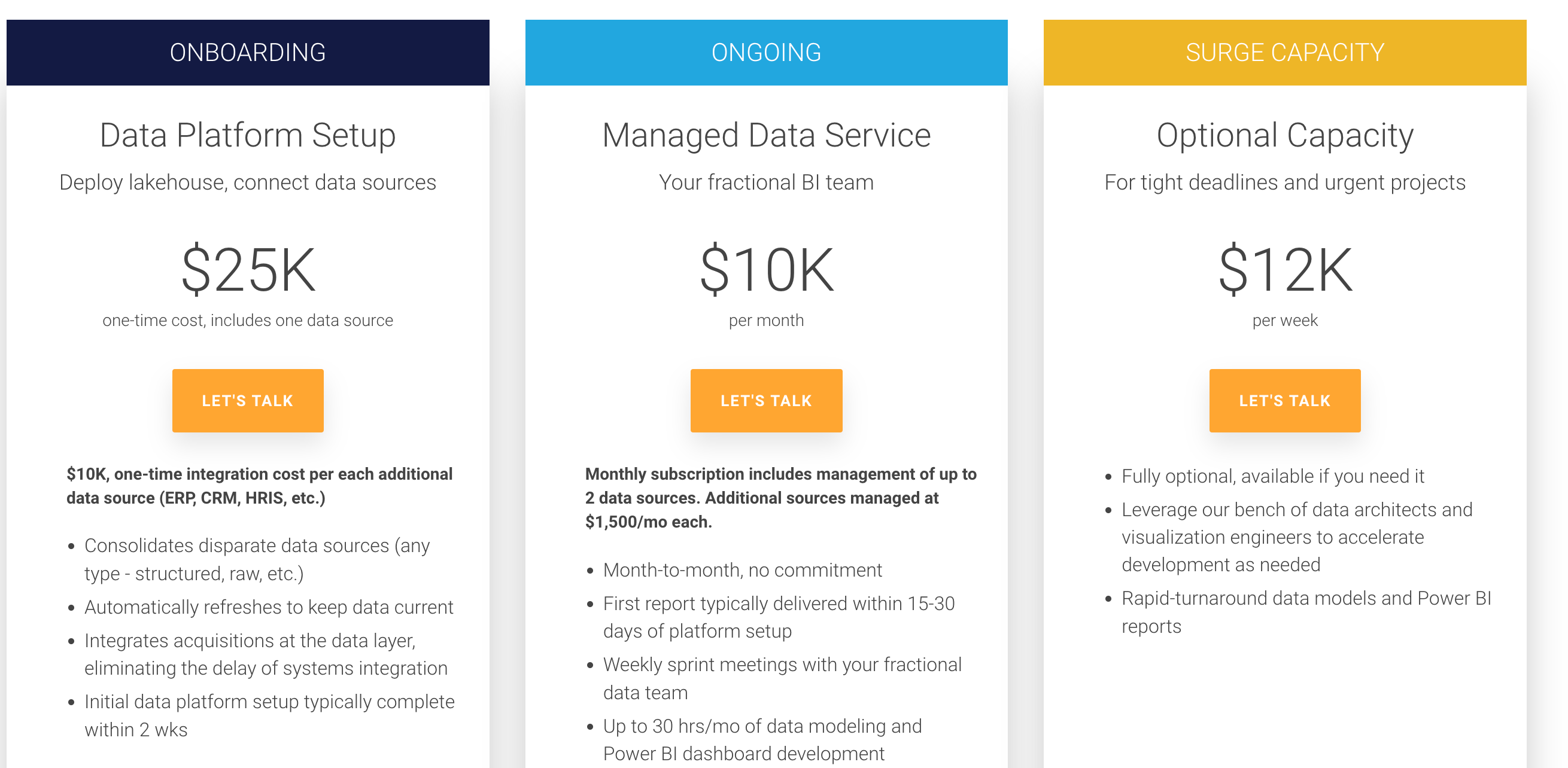“Power corrupts. PowerPoint corrupts absolutely.” – Edward Tufte, Yale Professor Emeritus
What’s the plumbing company of your choice? Garrett’s? Whatever it is, chances are, it’s part of a chain, but not a huge one. It’s probably a small to medium-sized business. Most local business chains earn $1M – $50M annually. Those businesses focus on 24-hour local service and good customer support. After all, plumbing work is essential, and customers need to trust their plumber.
However, data drives every decision in our current age, even if I should take route A or B to work. Small to medium-sized businesses are looking to profit from data just as much as big businesses, with one key distinction: They don’t have the means to pull it off themselves.
They have tons of IT systems and SaaS applications (likely an extensive ERP system) but not much tech expertise and little to no data expertise.
They need you; you can help them, but how do you properly convey your message?
We talked to dozens of data consultancies and analyzed the market to gather the following nine tips from our Head of Marketing for you.
Focus on one industry and identify key pain points

This is Trevor; he has tons of experience and probably can do data analytics work for any type of industry. Yet he chose to pick one and stick with it, at least for the marketing campaign for his consulting business. He focuses on e-commerce analytics, and that only.
By doing so, he’s able to play to his decades of experience in this specific sector, he can differentiate his service for his clients from competitors that provide a broad spectrum of services and thus charge premium prices.
And you can, too! To do so, you need to:
- Specialize in specific industries to offer more relevant services.
- Identify and address common pain points within those industries.
- Use industry-specific examples, like how data can help in e-commerce.
Sell through their business
Trevor is a smart analytics consultant; he doesn’t just use the one marketing trick to focus on one specific industry; he also makes sure to sell to clients using their businesses.
In theory, that’s easy; you tell clients how their business will grow because of the data work you do.
Trevor depicts how he can integrate into the existing systems and help the clients grow their businesses.

You can do that as well by:
- Connecting your services to their specific business goals and operations.
- Discuss how data services can integrate seamlessly with their existing processes.
- Show them the direct impact on their business, not just general data benefits.
- What Trevor could do even better: Make all of this specific to the industry of your clients!
Focus on practical outcomes
To make anyone believe something about you, you must show them, not tell them. David Maister tells us this in his bestseller “The Trusted Advisor.”
Less data-savvy people might also be less tech-savvy. So:
- Explain how data can solve specific, real-world problems they face.
- Emphasize the tangible benefits, like increased efficiency and revenue.
- Avoid technical details and focus on how data can improve day-to-day operations.
That’s exactly what the data consultancy das42 does for clients with a data platform. They show us they understand our practical problems like:
- My data is too unreliable
- My data is too complex
And practical deliverables like:
- A data platform + migration
- Self-serve BI

The education journey
Even if your client isn’t data-savvy, he wants to profit from data. To do that, he needs to learn, and you can become the partner to help them learn. So show that you’ll show them. Show that you can provide an educational journey for them to feel data-native.
- Offer to guide them through the process of understanding and using data.
- Provide a step-by-step roadmap.
- Don’t try to sell a 3-year plan!
A great agency we worked with told us plain blank from the beginning: Here’s the journey you’ll embark on, here are the three levels, you’re starting at 0, trying to go to 1, and most companies in your space don’t make it to 3. It was humbling, but I set the expectations right from the beginning. It also helped us understand what we were to learn from them.
The data consultancy Blast Analytics does an excellent job at this, selling itself as an “advisor to help you evolve.”

Focus on things they do know
Your client might not know anything about data; they might’ve never heard of Snowflake, but they sure have heard of Google, right?
The analytics consultancy Blast Analytics takes that association and leverages it into business:

Screenshot of the Blast Analytics website and their certifications
Making associations is easy;
- you take things people generally know, like Google or Adobe, and create an association.
- Or you pick up something specific to their industry. You could find the biggest plumbing ERP system and get certified. You could also write a blog post or provide a 5-step guide.
What matters is that you create an association with something they trust, to build trust yourself.
Sell a fractional analytics team
As one data consultant told us in a conversation: You can do all the modeling in the world and build all the dashboards you want, but at the end of the day, if the client has no business analyst and no data-savvy manager, then the value to the client is zero.
The consultancy Blue Margin takes this seriously. They sell an analytics team, the “fractional analytics team.”
If you think through it, that’s an excellent solution for all less data-savvy clients. They probably don’t have anyone able to do anything with the data you’re providing, so to get outcomes, they need to get a complete fractional data team from you.

Here’s how you can do it too:
- Position your service as a cost-effective alternative to hiring a full analytics team.
- Stress the advantages of outsourcing data analysis to experts.
- Highlight the savings on resources, time, and training; after all, your clients save at least one full-time employee (or more) per year.
Offer a package deal with flat pricing
One of the big pains of selling to less data-savvy clients is that you know best what services they need, but they want a lot of certainty on their side. It’s hard to have without knowing what exactly you need, right?
One good solution to this problem is packages, in particular, package deals with everything you know the client needs at a flat price the client has certainty over.
The consultancy Blue Margin has the following simple rules for their packages:
- a small setup cost
- one plain monthly fee that covers everything, including analyst time
- a potential surge cost that can be booked on top

Do customize
David Maister also explains that you don’t just need to show off to earn someone’s trust. You need to listen to your clients carefully and understand what is different, not what is the same.
If you sell data services, you need to offer customizations because there’s not a data stack on earth that is exactly 100% like another one. All tech stacks inside your client’s businesses are unique snowflakes. If you niche down, they will have a large overlap, but there’s always a crucial bit you’ll need to customize.
The consultancy DataArt does it by providing industry-specific packages for Fintech or Retail. These packages explain in detail how they differ and what they focus on in each segment.

You can do this too:
- Offer personalized solutions rather than generic packages.
- Understand their unique business challenges and tailor your services accordingly.
- Ensure the solution feels specifically designed for their business.
- Go two steps further on all of these in your talks with the client and the final proposal.
Use tangible examples related to the clients’ industry
The consultancy Blue Margin, in particular, focuses on the manufacturing market. They could provide long lists of services they offer and the packages they have. Instead, on their key landing pages, they show something practical: A plain old templated dashboard.
Yes, they call it “Manufacturing HQ,” but they sell their manufacturing clients on this one collection of dashboards.

You might think that’s cheap marketing, but it isn’t. It is a tangible example; it shows that they know the industry and show exactly what the customer will get as a dashboard.
It is tangible, it contains key numbers used in manufacturing, and the landing page even contains a video.
It isn’t cheap marketing; it’s practical and perfectly targeted at non-data-savvy clients. And you can make that effort, too! Here are a few tips:
- Provide real-life case studies or examples from their industry. They look cheesy but show you’ve done the work before.
- Show how similar businesses have benefited from your data services, and make the outcome tangible.
- Make the examples relatable and easy to understand.
- Have demo videos and images. If you don’t have good imagery, take the time to create something like the Manufacturing HQ.
- Have a specific solution tailored to their industry, even if it is just a template for a dashboard.
For more good information on how to run a data consultancy, check out the Data Consulting Club on LinkedIn! It’s the place for data consulting leaders.


